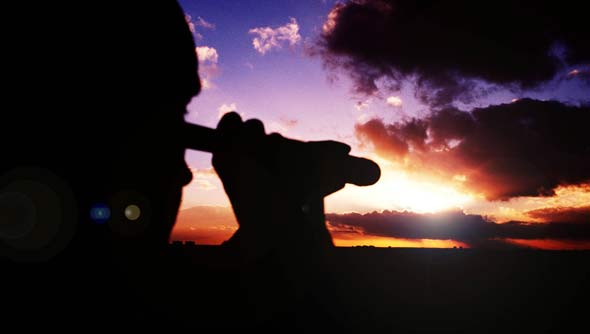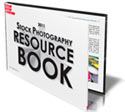BUDGET Stock Photo “State of the Nation”
Current stock photography industry trends, forecast for 2014 and beyond

Authentic Images
Back in 2009 Getty suggested we would start transitioning into 'warm' homely natural stock photography; at the height of the microstock "Ikea look" with all its high-key, shiny teeth and marble countertops it all seemed too hard to believe - but somehow very appealing in the face of a flood of stock photography material that looked very contrived.
So not that surprising to see continued market backlash with "death to the stock photo" flying the buyer rebellion colours. I tend to err on the side of caution here; designers are naturally attracted to new, trendy, edgy etc, it's almost an industry failing! When it comes to actually creating something the client will agree to and pay for there is still plenty of space for commodity stock photos, plain, simple and clean - with suggestion of retro or warm natural textures. Wood as a surface is almost ubiquitous in food photography and I think that will stay around for a while despite predictions of more luxurious surfaces like marble or granite being touted as the 'new black'.
Illustrations and graphic elements have become very popular over the past few years (perhaps by virtue of a marketplace awash with stale looking stock photos and the difficulty in finding both realistic and 'client safe' images. With everyone talking 'flat design' and minimalism these days we feel it's fairly safe to believe that illustration and graphics (especially infographic style) will continue to dominate visual designs online and in print; but this pushes ever forward the impact of great looking stock "hero" photography to home abstract messages like lifestyle, emotions and core values.
In summary: Illustrations continue to dominate, hipster style is everywhere (does anyone know how to buy trousers the right length?) and lens flares are not just in - they are fast growing towards 'awwwh the sun is in my eyes!'
Related:
stocksy - fair trade coffee meets stock photographers, (and the branding to match!)
a look at stock photo trends on stockarch.com
rich&wild a fortnightly feed of photo creativity in your inbox
Image Subscriptions
Long-time industry leaders Shutterstock have competition on their hands, the likes of Fotolia and Dreamstime have been offering subscription like products that open the door for those on a tighter budget to access modest quantities of images cheaply, Shutterstock still continue to dominate the big business end of the subscription market and the go-to place for design agencies and web publishers.
Full Screen and Video
Did someone flip the full screen switch? Full screen scrolling banners and marquees have been a mainstay of trendy designer sites for the last couple of years, they're growing towards the norm. Last week I saw something very interesting, paypal had full width video (pretty much talking over the whole browser window) on their front page. The video was conceptual and fairly low on movement (bandwidth is still a bit constraint on this) it also looked good as a still image - needed due to the fact that it stayed a still image on the screen for several seconds while the video loaded behind. To clarify here we are not talking about a video player with a sales video on the home page, we are taking about HTML5 and full screen video used as a background design element (no controls) to highlight a new feature of the site. I've long been sceptical about just exactly how much video will make inroads 'replacing still' and it's certainly not happening anything like as quickly as some predicted 5 years ago - you would have imagined a (nightmarish) world where everything you looked at bar the typography was moving video; that effect is fortunately is still reserved for a small number of tumblr accounts lol.
iStock recently announced dropping the sales of small sized images for a lower prices. (600px). With retina displays and growing numbers of full HD tablets, 1920px wide images are starting to become a base resolution for web and electronic use; users expectation on pinching and zooming everything to full screen if they want to grow. So the basic resolution is now ~3MP in landscape orientation. 4K UHD (ultra high definition) displays on the horizon making ~10MP images and higher the choice of 'high res' electronic use and video.
Market Growth
Revenue for all of 2013 was $235 million, up from $170 in 2012 at shutterstock, as a market leader that still makes stock photography a surprisingly small marketplace, but the likes of Envato offering a complete range of design solutions and images in 'packs' continue to offer buyers with even more convenience widening and diversifying the market. Facebook now 'sell stock photos from shutterstock' via a deal where the price of using a shutterstock photo is rolled up into the cost of publishing ads on the facebook platform - the whole process is integrated into the Facebook ad buying interface. Adobe have recently joined the bandwagon (relaunched might be a better description) with their purchase of industry "second player" Fotolia. and Autodesk have launched creativemarket, stock images frequently being sold in bundles of images aimed squarely at ready-to-use design applications.
50 million images on Alamy, 40 Million on Shutterstock, that's growth of more than 20 million+ new stock images in the last year. It would seem that the image supply continues to outgrow image demand and image supply continues to accelerate, quality is increasing too; as I have written for at least the past 5 years on this site "never been a better time for image buyers".
Mobile
Alamy introduced a mobile photographer's app to "generate" fresh images
Mobile brings realism + the oh so trendy Instagram look; it continues to kill off parts of editorial photography with crowd sourced (and inferior) substitutes, these don't stand up well to conceptual stock images, but are EXACTLY the kind images I mentioned at the start of this article: emotive and emotional images that are by their nature realistic and authentic.
Mobile stock photography is nothing new but when/if it takes off it will only be to the photographic market trend of realist looking photos, photos that look like they were shot by a friend - it's a hard balancing act; we all know that photos of food shot by friends and posted on facebook usually look awful, but some professionals pull it off with just an iphone (food bloggers for who each post needs to have minimal cost). There is some serious skill involved in creating professional stock photography that looks off the cuff and just enough added realism without adding distracting defects. Instagram style effects and vignettes, hmmm, love or hate them they do often transform a crap photo into something more acceptable, even cool. Not so very long ago this look was described as the 'flickr' look, how times have changed. The look however has not changed, it's still the same and it becomes ever more pervasive as social media sites push their photographic content to front and centre, content often sourced for free from their customers.
Microstock & Macrostock Forces
While lots of agencies have had premium collections for some time, Shutterstock (the largest player in the microstock industry) last year launched their offset collection on a separate website site. Similar to stocksy as mentioned above, we are almost splitting the marketing again, two opposite forces dragging both cheaper and premium. istock have recently dropped their premium vetta collection completely - arguably that might be due to getty (istocks owners) focusing on their own macrostock site gettyimages.com
If you enjoyed this article please do us a favour and follow us on facebook or twitter.
Thanks!
RESOURCE BOOK FREE DOWNLOAD
Free Resource Book listing the best of Free and Paid Stock Photo Libraries
